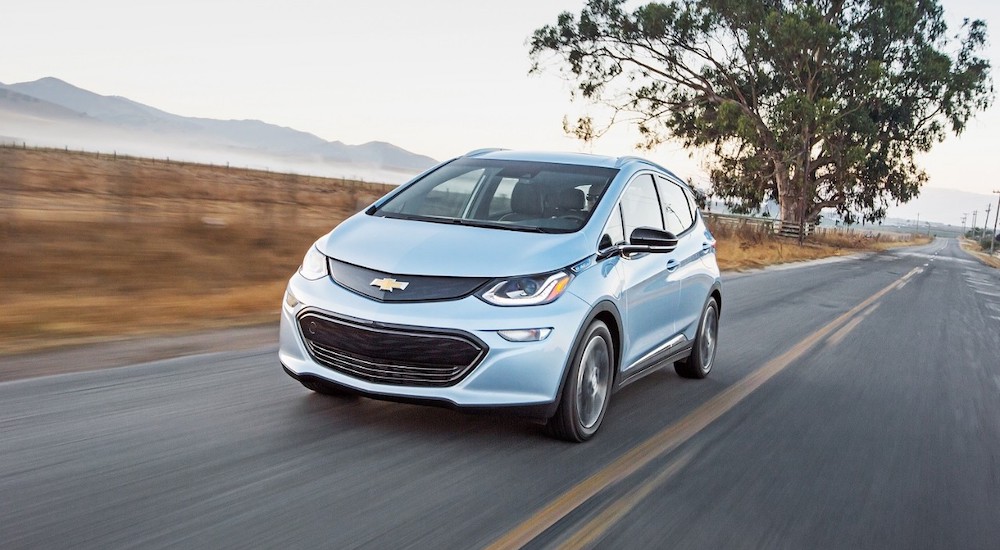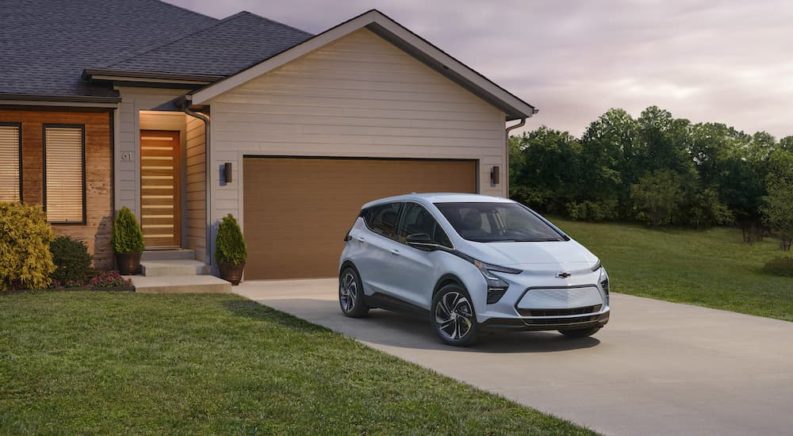Folks, the auto industry is a harsh mistress–you never know for sure what will go over well and what will struggle. That said, the one thing I can pretty well guarantee is that if your vehicle decides to engage in spontaneous combustion, then you’re going to have a bad time. That’s exactly what Chevy learned (or perhaps was reminded of) this last year or so, thanks to the absolute disaster it had on its hands with the Bolt EV. I’d call this vehicle a dumpster fire, but that’s an insult to dumpsters everywhere.
If you’d asked me a couple of years ago what a car has to do, bare minimum, to function as a vehicle, I probably would’ve said: start, stop, and get you from point A to point B safely–everything else is extra. Little did I know I’d need to add to that list “Not light itself on fire at any given opportunity.” Yet, here we are, and the Chevy Bolt EV came through this last year with a bold and beautiful demonstration of what you absolutely shouldn’t do if you’re a car.
A Disaster Years in the Making
What I find most compelling about this situation with the Chevy Bolt EV is that it wasn’t a sudden, disastrous event that resulted in immediate and decisive action. From what I can find, the earliest report of a Bolt EV deciding to burst into flames was in March of 2019–some two and a half years before they issued the final recall to replace the batteries in essentially every Bolt EV on the road. So what took so long?
The first fire I can find a report of was in March 2019 on a 2018 model; a second fire occurred in September 2019 on a 2017 model. This is important because it shows this wasn’t a small issue, spanning two model years from the beginning. And yet, nothing happened until GM issued a recall in November 2020. It took the automaker until May 2021 to actually deliver a “fix” for what they claimed the issue to be. All good, right?
Nope. Between the September 2019 fire and the recall in November 2020, there were ten more Bolt EV fires! GM’s fix was a software update. Rather than go through the effort of replacing batteries when the problem initially presented itself or ensuring new batteries went into 2020 models after those first fires, GM kept using the same batteries and tried fixing them with software. I’ll let you guess whether a software update or battery replacement is cheaper.
Of course, that first fix didn’t work, and July 2021 proved to be a banner month for the Bolt EV: there was a fire on July 1st, another on the 2nd, and then two more confirmed Bolt EV battery fires on July 25th. Finally, in August of last year, GM announced a full recall of all Bolt EV models on the road and said they’d replace all of their batteries. More than two years after the first fire, they finally did the right thing to fix the issue. Along with this recall and replacement, they stopped production on the Bolt EV and EUV models until they could get new batteries that couldn’t self-immolate.

What About Gas Cars?
If you spend any amount of time in the online car world, you’ll see people often report how much more likely gas-powered, which is to say Internal Combustion Engine (ICE), vehicles are to ignite. That’s true. Statistically speaking, there are far more ICE-vehicle fires each year than Battery-Electric Vehicle (BEV) fires. However, it’s worth pointing out two things. First, there are far more ICE models on the road than BEVs. For the record, I’m a huge fan of BEVs and think they’ll be good for the auto industry and the world in general, but fair’s fair.
The second point is how these fires tend to happen. ICE vehicles burst into flames because of damage or mechanical abuse. For example, a car isn’t properly maintained and finally overheats to the point where it lights on fire by the side of the road. Or two vehicles collide, causing damage that spreads and results in the engine or gas tank erupting into flames. Those are serious, of course, but they’re not spontaneous by any means.
Bolt EV models were erupting into fiery ruin simply while charging, especially dangerous when charging in a person’s garage. Even worse, they could light on fire when not charging, merely sitting, parked, anywhere at any time. It was so bad that buildings were banning the Bolt EV from being parked in structures and under covered areas for fear of fire and damage. On at least one occasion, a Bolt EV burst into flames while parked, and the fire department put it out. Unfortunately, the fire restarted less than an hour later, and they put it out again. It was then towed to a dealership and returned to Chevy, where it promptly erupted into flames a third time!
On numerous occasions, fire departments were repeatedly called after initially extinguishing the flames because the vehicle would burst into additional conflagrations. They couldn’t just drain the gas tank or douse the engine; they’d spend an hour putting the fire out only to have the battery light up again. This was beyond anything ICE vehicles can do, which is why this situation stands out compared to other types of car fires.
The Recall Heard ‘Round the World
As I said before, in August 2021, GM finally did what should’ve been done a lot sooner and issued a recall. This wasn’t a recall of select models and years: they recalled every Bolt EV from 2017 to 2022 and Bolt EUVs built before the recall (2022 was its first model year). Of course, all of this happened amid a global microchip shortage and supply chain issues, making this recall take much longer than usual since GM will replace the batteries in all of these vehicles.
The expected cost of this full recall and battery replacement process is about $2 billion. LG Energy Solutions, the company that made these batteries, has agreed to pay $1.9 billion toward this process. This tells me two things. First, LG has essentially agreed to take all the blame for the issue. Second, the amount of money battery manufacturers are making right now is completely bonkers. Still, this was a massive effort and one of the biggest recalls in history since it impacts the Bolt’s full lineup for numerous years. It’s hard to imagine how GM will possibly recover from this…
Long-Term Repercussions
Oh, wait, no, it’s not; GM has already bounced back. For starters, these issues were part of their old battery technology. They’ve been hard at work developing their Ultium battery platform, which they say was informed by these issues and designed to avoid them in the future. In other words, GM can walk away from this and point toward the future while showing off their fancy new BEV tech. But I’m sure this will have a significant impact on their Bolt EV sales this year and likely result in Chevy losing tremendous profits over the—
Nah, just kidding! After shutting down manufacturing until they had new batteries ready, Chevy resumed production in April of this year. Chevrolet released their sales numbers recently, delivering nearly 15,000 Bolt EV and EUV models in the third quarter of 2022, an increase of 226% from last year. It’s GM’s best quarter ever for the Bolt models, and demand is so high that Chevy is increasing their production on the model from 44,000 this year to more than 70,000 next year to keep up. So while Bolt EV sales undoubtedly dropped in late 2021 and early 2022, as they initiated the recall and halted production, they’re back up and better than ever.
I guess that’s the takeaway: the Chevy Bolt EV, the worst car in the nation, which had to undergo an unprecedented recall across six model years, is selling better than ever. The next time something like this happens, we–as consumers–have just taught car companies to kick the can down the road as long as possible, and only when they can’t run away from it any longer, finally fix the issue. Because even when you have a car that uses fire to put itself out of its misery, people will line up and buy it with an ever-growing demand.





